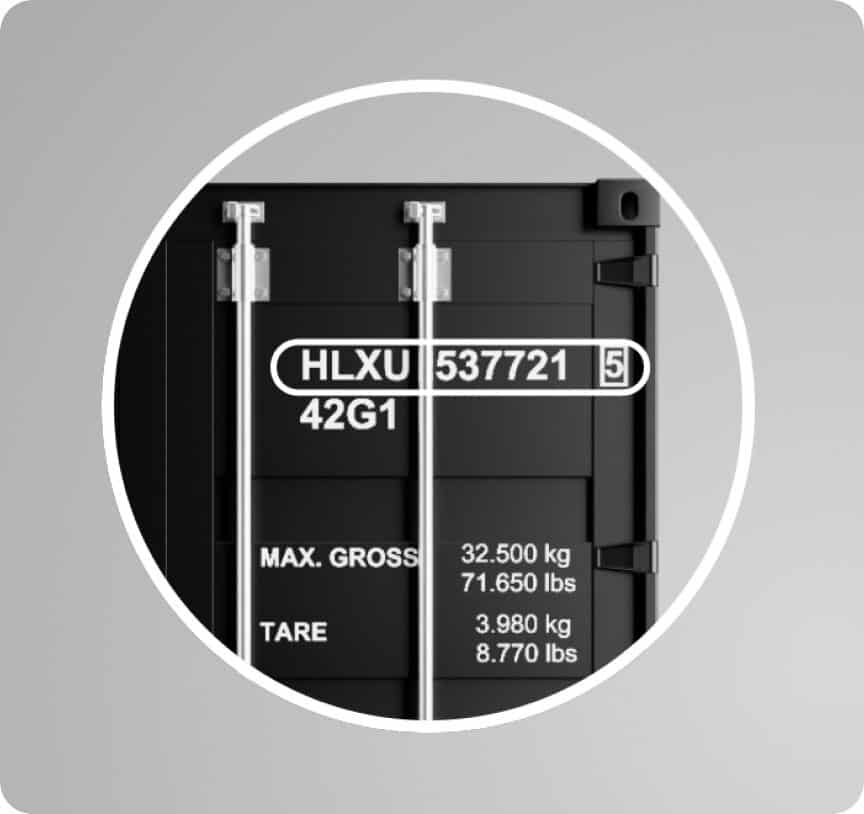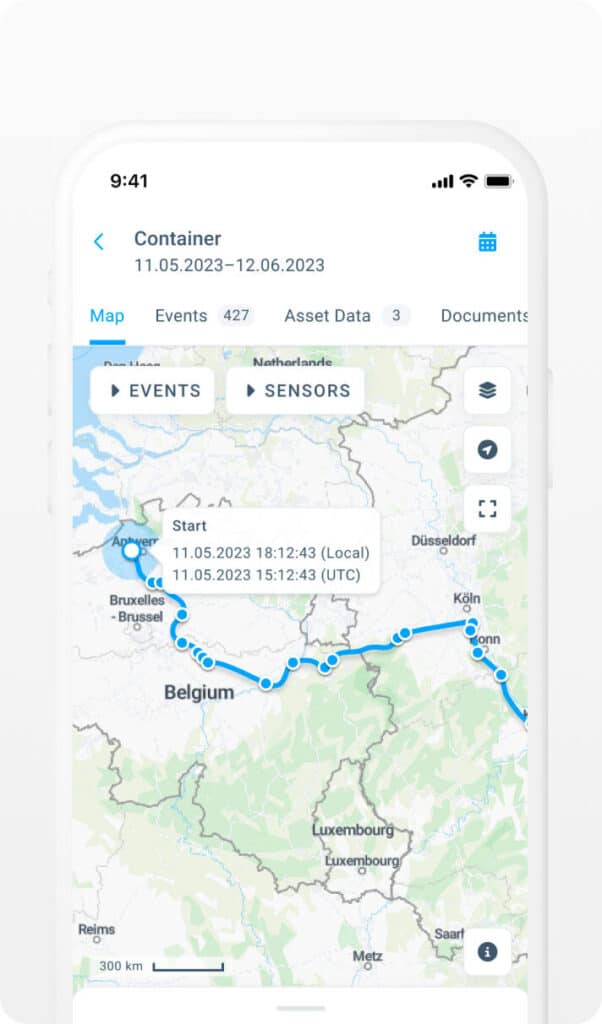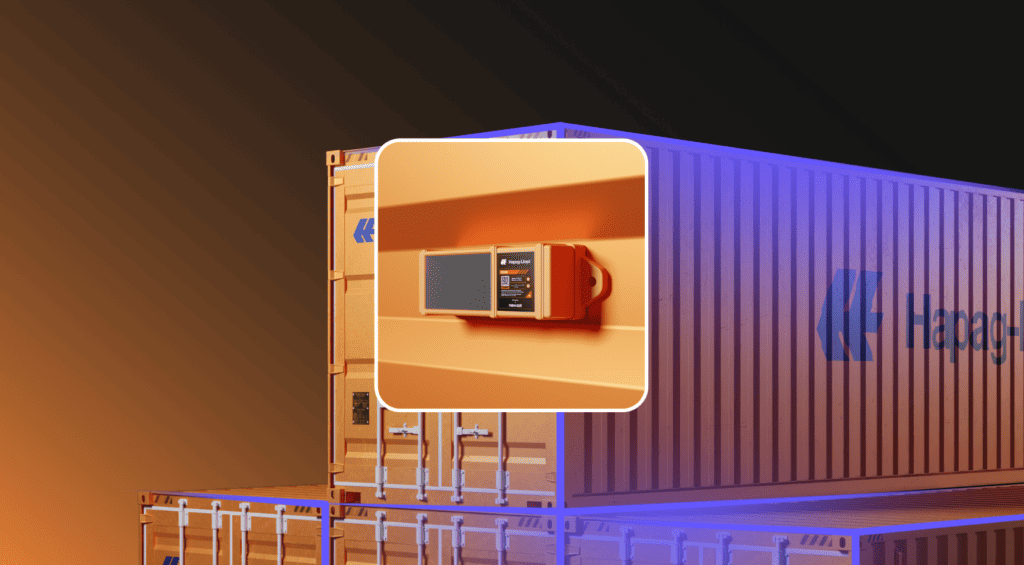Container tracking supports safer freight transportation across all transport modalities and shipping routes. As the usage of shipping containers continues to increase globally, accidents and lost cargo rise in tandem.
In the event of lost or damaged cargo during the transportation process, many shipping lines and forwarding companies provide insurance. However, without adequate data and insights into how and when the cargo was lost or damaged, insurance claims can be complicated, time-consuming, and, at times, inconclusive. With container tracking systems, companies can pinpoint and match up container status with exact GPS locations to provide more conclusive reporting and navigate claims processes with greater efficiency.
Improved processing of insurance claims is only one benefit of container tracking. Real-time visibility empowers shippers and their customers with greater resilience, better-informed decision-making, and insights leading to more optimized processes.
How Does Container Tracking Work?
A container tracking system relies primarily upon deploying additional hardware on cargo or outside the container. Many container tracking solutions are small, portable devices that are battery-powered and capable of transmitting data in real time.
Nexxiot’s solutions are self-powered and can transmit data for up to 10 years maintenance-free – the longest device life in the industry. The Nexxiot Edge gateway is the smallest container-tracking device of its kind.
Advanced container tracking devices represent recent innovation in supply chain management, improving safety, efficiency and sustainability. Outside of recent IoT, Big Data, and AI advances, processes and systems are already in place to support container tracking.
Container Number (CN)
The Container Number (CN) is a container tracking system whereby a unique identifier is assigned to each container. These identifiers work similarly to license plates and are usually imprinted on shipping containers in combination with other data such as operational information and ISO codes.
All shipping containers must be marked with their container number, which follows the format of XXXU1234567, wherein the first three letters are the owner prefix (i.e., identifies the shipping line), while the final letter defines the type of container (i.e., freight, detachable, etc.)
Nearly all shipping lines will have an online container tracking system that can be searched by inputting the assigned container number. These container tracking systems, however, only display general information such as departures, arrivals, and general transportation event data.

Bill of Lading (BoL)
A Bill of Lading is a mandatory legal document issued by the carrier that states the acceptance of a specific cargo with details on the contents and the intended destination. It serves as a contract and a receipt for both parties.
Bills of Lading also have their unique identification number, used as a substitute container tracking system. Most shipping lines provide search functionalities within their websites (or by other means) through a BoL number.
Booking Number (BN)
Like any other delivery method, a booking number serves as a shipping container tracking system. Various carriers provide unique identifiers for each order, which can be inputted into the company’s online container tracking website or provided manually.
Note that a carrier and a forwarder will have their booking number. If container tracking is to be done online, it is required to use the correct number (i.e., a forwarder’s for their website and not the other way around).
Automatic Identification System (AIS)
Since the early 2000s, The International Maritime Organization has mandated the use of transponders in large container ships. Vessels above 300GT are required to have an identifying number whenever at sea.
AIS is a system of transponders that tracks ships and shipping containers. The AIS container tracking system provides extensive data on the status of the vessel and its cargo, displaying the ship’s position, speed, and heading. Additionally, AIS stores information such as the number of shipping containers, cargo status, whether they’re loaded or unloaded, etc.
Data from AIS might not be readily available to regular users, as it’s intended for maritime use. Shipping lines may be able to provide such data if necessary, as AIS has the potential to perform real-time container tracking if other methods are not available.
Container Tracking Solutions
There are a few methods of container tracking that complement the aforementioned systems:
- Carrier and shipping line websites. Freight forwarders, shipping lines and most other carriers will usually have a unique web-based container tracking solution that accept booking, bill of lading, and container numbers.
- Third-party websites. There are websites available that combine container tracking from various companies into one system. These websites send a search request to the dedicated website by using an identification system.
- Mobile applications. While some carriers may have their own applications, these are usually only used by those that employ container tracking devices. Since these container tracking tools transmit data in real time, it’s usually sent to a dashboard or mobile application as it’s often the easiest way to look information up.
- Manual request. It is possible to contact the forwarder or shipping line responsible for signing the delivery contract. This option is resource-intensive and, as such, not often used.

Container Tracking Devices
The most significant advancement in container tracking is dedicated IoT devices. These are applied inside or outside shipping containers and transmit real-time data to cloud-based receivers.
Container tracking devices go beyond geolocating shipping containers. Advanced container tracking devices provide data on CO2 output, temperature readings, shock level, humidity, and much more with sensors that deliver data wirelessly.
Such IoT devices are also self-powered instead of using batteries, extending their lifetime to 10 years, although these can only be applied to the outside of containers. While it may initially seem like a drawback, it’s highly beneficial as they reduce the number of accidents during shipping compared to container tracking devices mounted on the inside.
As such, container tracking devices are the most advanced solution that provides vast arrays of information in real time.

Conclusion
Hardware solutions have opened up new possibilities for container tracking, namely because the hardware devices are self-sustaining and fixed directly on the containers. This allows new data to be tracked that was not previously possible and to be tracked continuously, leading to new insights and fewer human errors. In essence, container tracking devices have the potential to provide significant amounts of data for little cost, making it easier to optimize shipping.
As these hardware solutions, like the ATEX-certified Nexxiot Edge gateway, collect data and turn it into value, the benefits and use cases of real-time container tracking continue to expand. The benefits provided through these devices are magnitudes greater than any other container tracking method, and the future is exciting to see how it will enable safer, easier, and cleaner global transportation.

